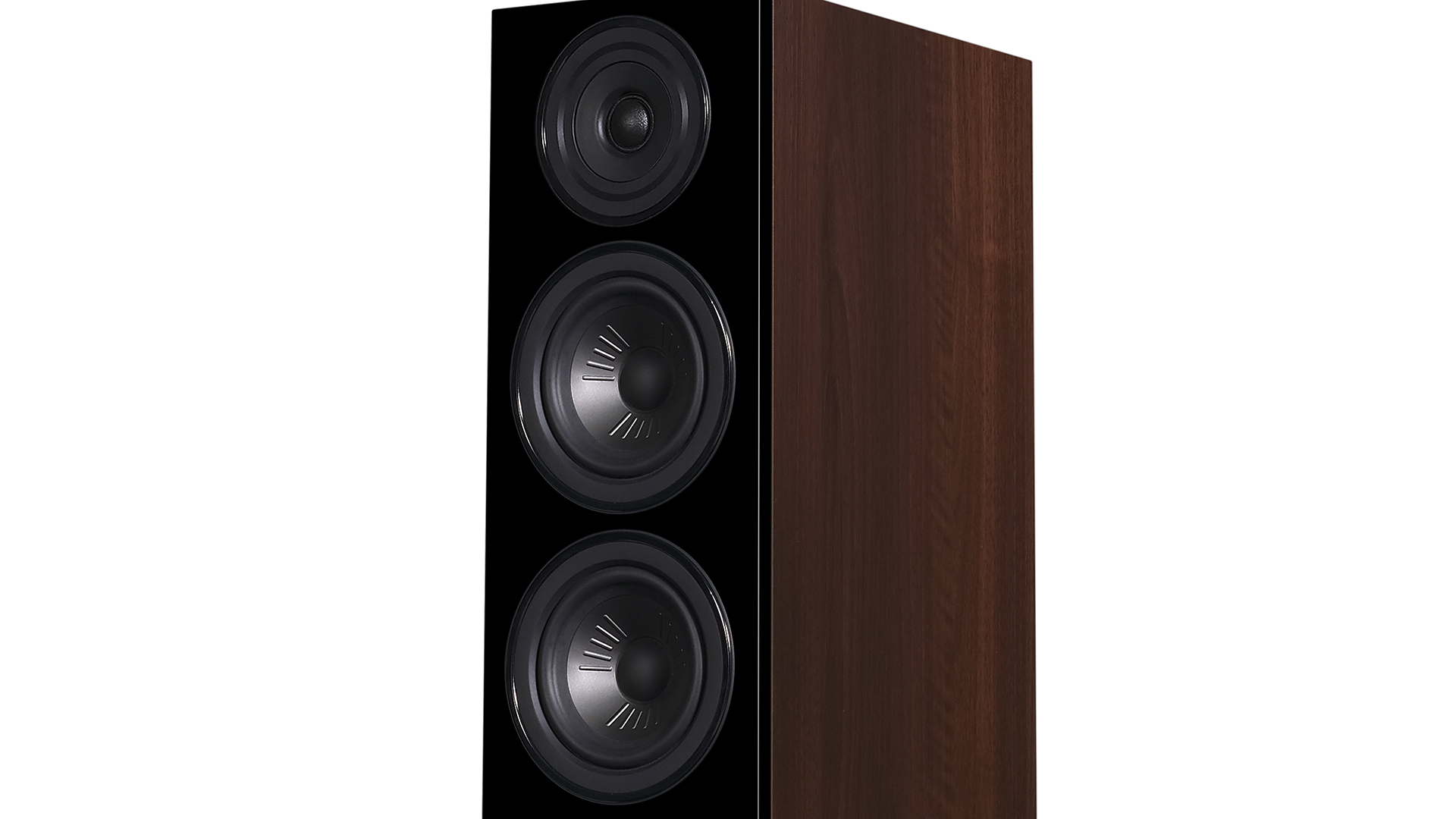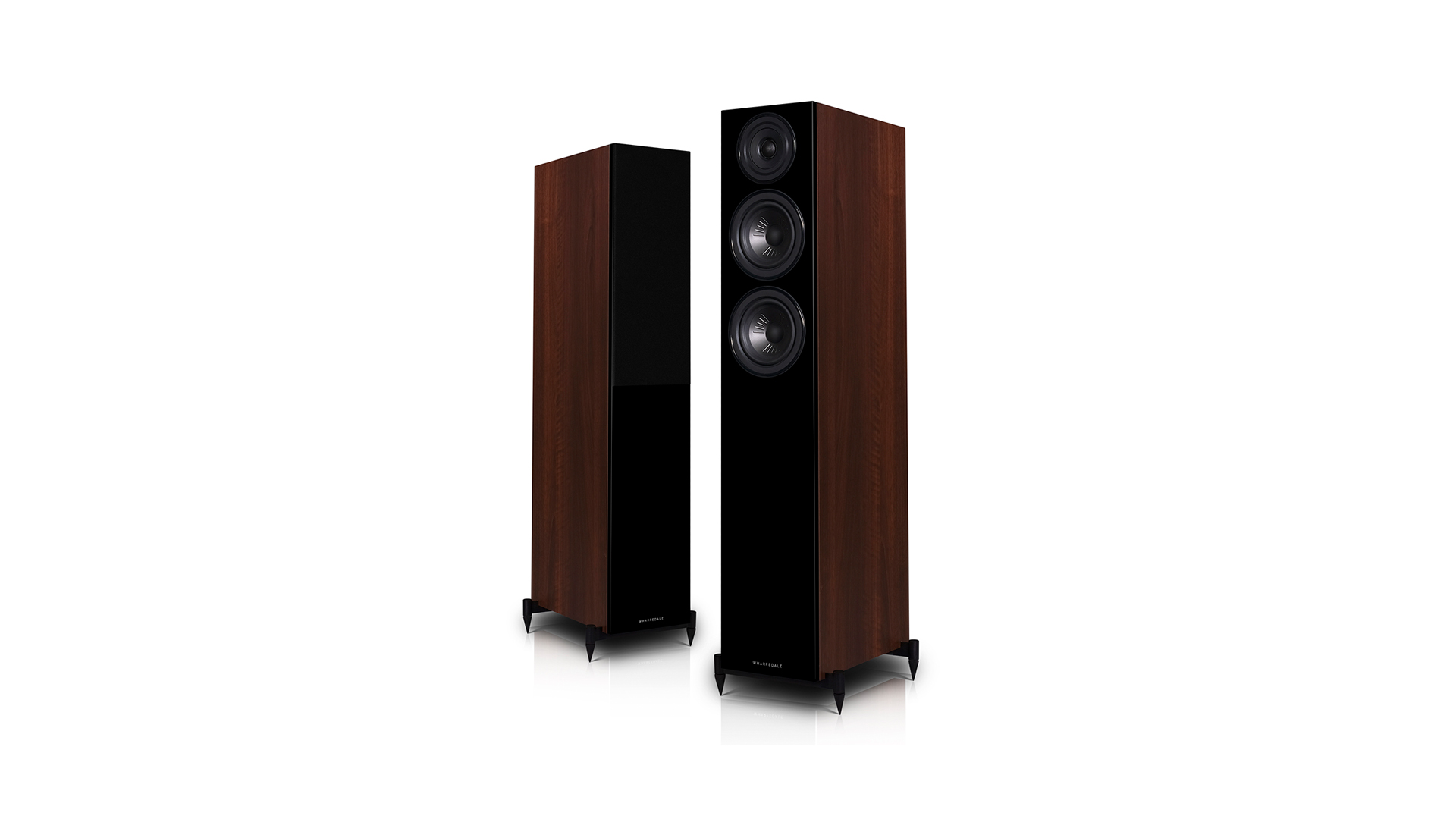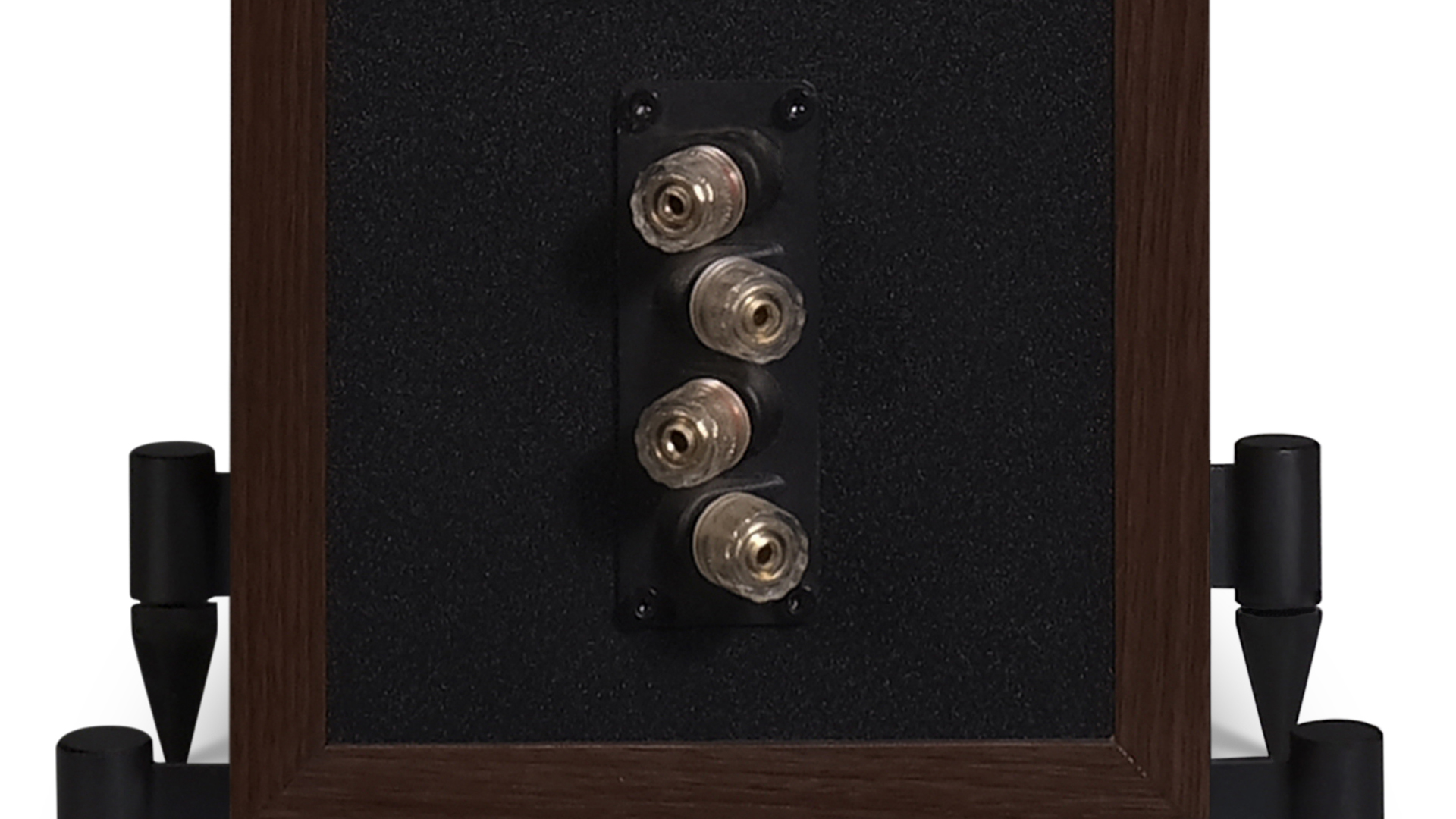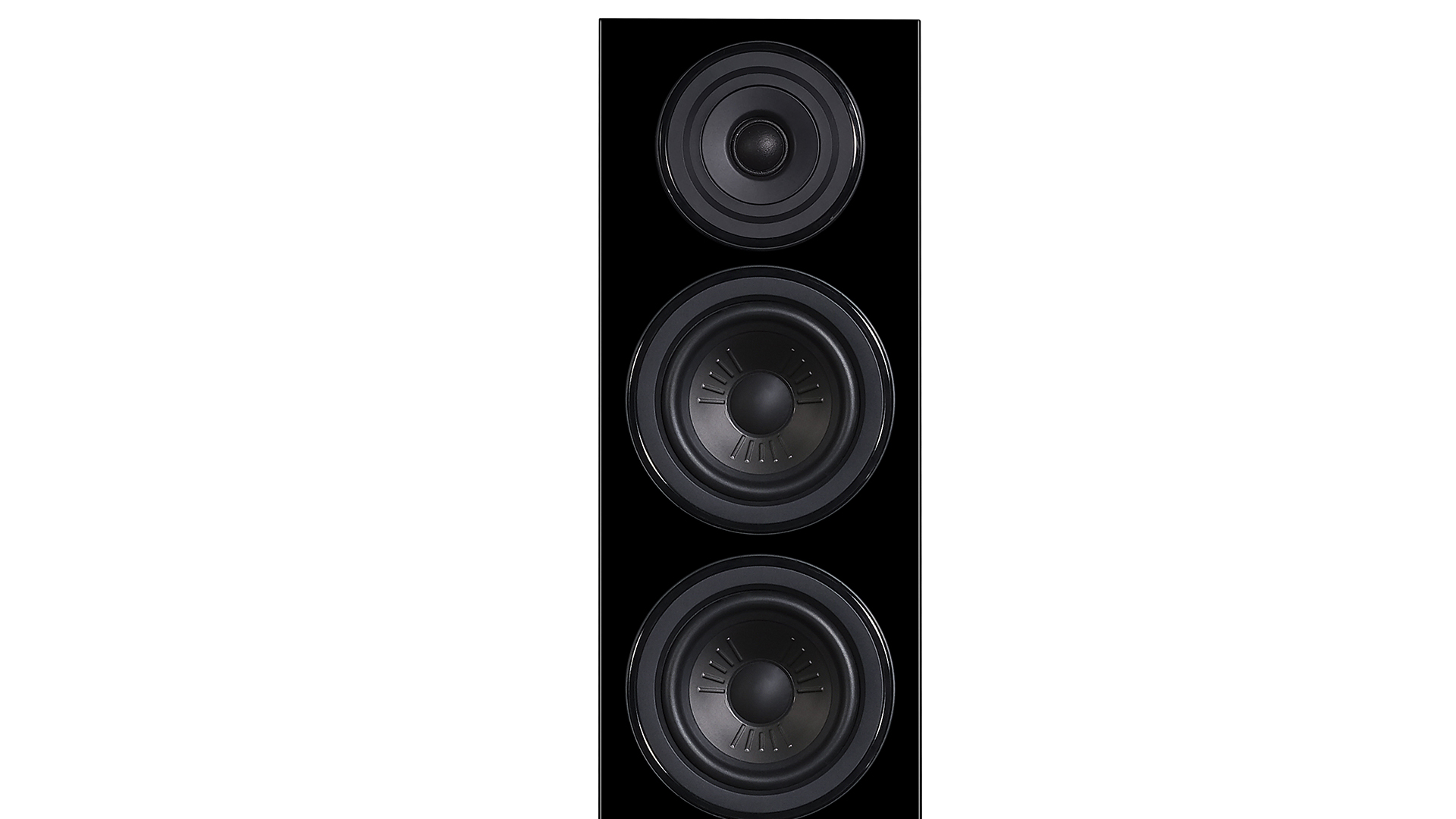What Hi-Fi? Verdict
Wharfedale’s Diamond 12.3 floorstanders are refined, entertaining and well built. What’s not to like?
Pros
- +
Superbly balanced presentation
- +
Expressive and revealing midrange
- +
Pleasing build and finish
Cons
- -
Nothing at this price
Why you can trust What Hi-Fi?
Mention the words ‘Wharfedale Diamond’, and the image that comes to mind is that of a small talented budget standmounters. That description applies to the originals from 1982, as well as the star performers from subsequent generations.
What of the various Diamond floorstanders? As a breed, they have proven to be solid over the years but relatively unremarkable on the whole. Wharfedale, like pretty much every other speaker brand out there, has struggled to make a properly musical budget tower. Until now that is.
While the new 12.3 can’t truly be called budget, they do sit at the more affordable end of the market. Most importantly, they have a musical performance that, if anything, impresses us even more than that delivered by the lauded Diamond 12.1 standmounters.
Build

Wharfedale tends to start with a clean sheet every few generations of the Diamond, and so it is with the 12 series. The cabinet is a carefully crafted, straight-edged design that's strategically braced to provide a solid and low resonance platform for the drive units to work from. It’s all wrapped in a neat, classy finish that belies the 12.3’s modest price. We even like the tidy feet arrangement and smart design of the spikes.

Type 2.5-way floorstander
Sensitivity 89dB
Nominal impedance 8ohms
Frequency response 45Hz - 20kHz
Dimensions (hwd) 98 x 18 x 32cm
Weight 19.5kg (each)
These speakers are available in four finishes: black, walnut, white and a rather classy light oak. And the drive units are just as admirable. The 12.3 are a 2.5-way design where the upper 13cm driver covers everything from midrange downwards, leaving the second one to reinforce the lows. Both drivers use a cone material called Klarity, a mix of polypropylene and mica, claimed to be light, rigid and well damped.
Wharfedale follows standard industry practice by using the same tweeter throughout the Diamond 12 range. It’s a 25mm coated woven polyester soft dome, and a good one it is too. A carefully shaped faceplate leaves as much of the dome exposed as possible, and the contouring closest to the dome is there to provide a small degree of horn loading.
Combined with a carefully calibrated, relatively sophisticated crossover, the result is a speaker with a sensitivity of 89dB/W/m and a nominal impedance that’s quoted as being 8ohm compatible.
Perhaps it’s more useful to know that the minimum impedance is 5ohms, which means these floorstanders are unlikely to give any decent price-compatible amplifier a problem.
At just short of 98cm tall, the 12.3 aren’t massive speakers, but they still perform best if given a little room to breathe. We find they work well if positioned at least 50cm from the rear wall; we settle on 90cm in our test room. Similarly, keep them at least 70cm away from the sidewalls if you want to maximise stereo imaging, sonic balance and clarity. A bit of angle towards the listening position helps to firm the stereo imaging, too, but the 12.3’s broad dispersion characteristics mean that you don’t have to be millimetre-perfect to get good results.
Speakers at this level have a difficult job to do: they have to be forgiving enough to sound acceptable with budget all-in-one electronics but still have the transparency to make the most of the best price-compatible separate components around.
Compatibility

The Diamond 12.3 are masters at juggling these almost contradictory demands. They're smooth, even-handed and wonderfully refined for the money. Feed them a poor signal and they are skilled at revealing the shortcomings without shouting about them. They’ll round off rough edges and downplay unwanted aggression without sounding like they’re smothering the life out of the music.
But given a good source and suitably capable amplification, they perform superbly. While we use our usual reference Naim ND555/555 PS DR music streamer and Burmester 088/911 Mk3 amplifier for part of the test, the bulk of our listening is done with more price compatible electronics in the form of the Marantz PM6007 amplifier and Cambridge CXN streamer. Regardless of the combination, these Wharfedales work a treat.
Sound

Feed them Trance Frendz by Ólafur Arnalds and they deliver a lovely layered sound that’s brimming with detail and dynamic nuance. These speakers capture the album’s laid-back rhythms in a pleasingly sure-footed manner and don’t get tripped up when things get complex.
They resolve a large amount of information but also present it in an organised and controlled way. The Wharfedale’s chief rival is the talented Fyne F302i, which sound more enthusiastic but lack the Diamond’s innate sophistication.
As we move from Jay Z’s Blueprint 3 to Kate Bush’s Hounds Of Love, we appreciate the 12.3’s articulate and expressive midrange and the seamless integration between the drive units. We like how Wharfedale has avoided excess; there’s enough bass weight to satisfy but not so much that it spoils the balance of the presentation. The lows are agile, satisfyingly rich and textured with it.
These Diamonds also sound good at lower volume levels. Too often we come across speakers that only come alive when pushed hard, but the 12.3 can be enjoyed at levels that won’t wake the kids or upset the neighbours late at night. That counts for a lot in our books.
Play them louder and these speakers don’t complain. They deliver Hans Zimmer’s raucous The Battle from the Gladiator OST with verve, tracking the brutal dynamics well. There’s punch and power when required, but also a level of subtlety that’s rare to find in a floorstander at this price. You can add an even tonal balance and stable stereo imaging to the list of plus points, too.
Verdict
It’s tough to make a truly talented affordable floorstander, but Wharfedale has cracked it with the 12.3. They are terrifically accomplished for the money and good enough to claim a space in the Diamond’s hall of fame. Don’t buy another tower at this level without hearing this one first.
First reviewed: October 2022. Review updated: November 2024.
SCORES
- Sound 5
- Compatibility 5
- Build 5
MORE:
Read our guide to the best floorstanding speakers
See all the What Hi-Fi? Award 2024 winners
Read our Wharfedale Diamond 12.1 review
Read our Fyne F302i review
What Hi-Fi?, founded in 1976, is the world's leading independent guide to buying and owning hi-fi and home entertainment products. Our comprehensive tests help you buy the very best for your money, with our advice sections giving you step-by-step information on how to get even more from your music and movies. Everything is tested by our dedicated team of in-house reviewers in our custom-built test rooms in London, Reading and Bath. Our coveted five-star rating and Awards are recognised all over the world as the ultimate seal of approval, so you can buy with absolute confidence.
-
M3lk3r I would love a comparision of these and The Dali Oberon 5! I've heard the Oberons but I can't audition the Wharfedales.Reply -
iammr4 How would What HI-FI position Diamond 12.3 vs 12.4, what are the differences between the 2 pieces, and how 12.4 is comparing over the other rivals please?Reply -
Shay.M Hello and Hi! How big is the room that fits the wharefedall Diamond 12.3 ? What is the minimum size? in meters please.Reply
Why this specification is never there? It is very important to scale new speakres to the room size. I Think every review must tell the readers what the minimum and the maximum size of room may fit to the speakers on report. The words small medium and large soes not say anything because it is different from one person to another. -
npxavar Reply
Room size is related to bass extension. My Oberon 3's reach 47Hz and they are stand mounts with one woofer, the Diamond 12.3 reach 45Hz and they are floorstanders with two woofers. In terms of area 15sqm is small and 25sqm is medium/big, but the dimensions matter also. You will need a room with 7m length or more. Tone controls can help you with a smaller space. My Oberons play fine with the bass toned down in a 15sqm space that is 5m in length.Shay.M said:Hello and Hi! How big is the room that fits the wharefedall Diamond 12.3 ? What is the minimum size? in meters please.
Why this specification is never there? It is very important to scale new speakres to the room size. I Think every review must tell the readers what the minimum and the maximum size of room may fit to the speakers on report. The words small medium and large soes not say anything because it is different from one person to another. -
GSV Ethics Gradient It's not that simple though, is it? Frequency response figures allow for output falling at the extremes, and not necessarily by the same amount - there isn't just a sharp cut off where output stops. One speaker may stay relatively even until close to its quoted minimum, where another may roll of gradually from considerably further up the range.Reply -
Tomasz Jaciubek Reply
I’m running my Fyne 302’ s with Marantz 6005 amplification and never thought “Uhhmmm, I wish it was noisier “ My room is 4.5x3.7m so I believe these 12.3’s would fill well 25sqmShay.M said:Hello and Hi! How big is the room that fits the wharefedall Diamond 12.3 ? What is the minimum size? in meters please.
Why this specification is never there? It is very important to scale new speakres to the room size. I Think every review must tell the readers what the minimum and the maximum size of room may fit to the speakers on report. The words small medium and large soes not say anything because it is different from one person to another.


